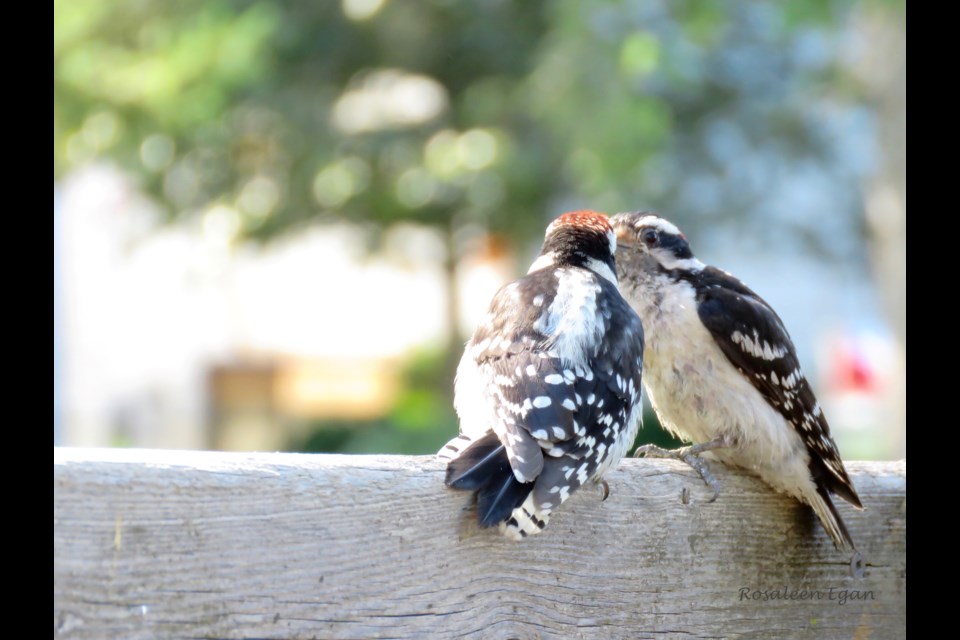Spending time on the deck in these beautiful summer days is restorative and creates a relaxed opportunity to witness curiosities of the bird kind.
This past week, I was privileged to see first a Downy Woodpecker feed its offspring, and then a Hairy Woodpecker doing the same the next day. It struck me as rather significant in a synchronistic kind of way, not in a world changing kind of way. I did write about my experience observing a Hairy Woodpecker feed its young last June, but as I had the experience of the back to back Hairy and Downy feedings, I feel it deserves mention.
As some readers will know, the similarities of colouration between a Hairy and Downy Woodpecker is curious in itself as they are only distantly genetically related. The edges of the Hairy Woodpeckers’ tail feathers are white without any black markings. The Downy Woodpecker is only about 16.5cm (6.5 inches) or about the size of a sparrow and the Downy is robin-sized, about 24 cm with a longer bill.
“These woodpeckers are the only common woodpeckers that show a vertical white stripe on the back. Males of both species have a red patch on the back of the head. Juveniles may have a wash of red, orange, or (rarely) yellow on the crown,” says feederwatch.org.
Each of the parents chose sunflower seeds from the bird feeder, cracked them open by wedging the seeds between the deck railing and a supporting post. They then regurgitated the contents into the mouths of their young. The Downy fledgling largely chose the comfort of a tree to wait for feedings. It surprised me when it left the tree and clung onto the back of the chair opposite to me. After trying various spots on the deck and eventually returning to the tree, it received feedings on the deck railing for a time. This was a spot closest to the nut-cracking parent and the feeder.
As it happens, the Hairy Woodpeckers did much of the same routine, although the youngster seemed a bit less hesitant to wait out in the open, and perhaps a bit less patient as it eventually ended up right on the feeder. Neither set of birds seemed phased by my being 3-4 metres from the feeding “station”.
There are various theories as to why the Downy has evolved to look like the Hairy including trying to trick Hairys that they are one of them to avoid being picked on by the larger bird, and then also to scare off other aggressive birds. Studies don’t fully support this as Downys appear unsuccessful in tricking the Hairys who are not conducive to sharing feeder space, and also it turns out the Downys are pretty good in their own right of fighting off other species at feeders.
To more fully understand the reasons for the look-alikes, there are studies planned to use large enclosures to expand knowledge from feeder behaviour to a more life-in-the-wild scenario.
I am pleased I was able to enjoy the curiosity of the look-alikes, and the similarity of behaviour in terms of feeding their young.
As an aside: House Sparrows have also been feeding young on or near my deck. I was at the kitchen table yesterday when a fledgling landed on the window screen and was subsequently fed before finding a more suitable place for such activity.
Evidence of nurturing is all around.
I share experiences of bird visitors to this property with readers every couple of weeks. Until next time, keep your eye to the sky, and look for birds that may come by.
Rosaleen Egan is a freelance journalist, a storyteller, and a playwright. She blogs on her website rosiewrites.com



